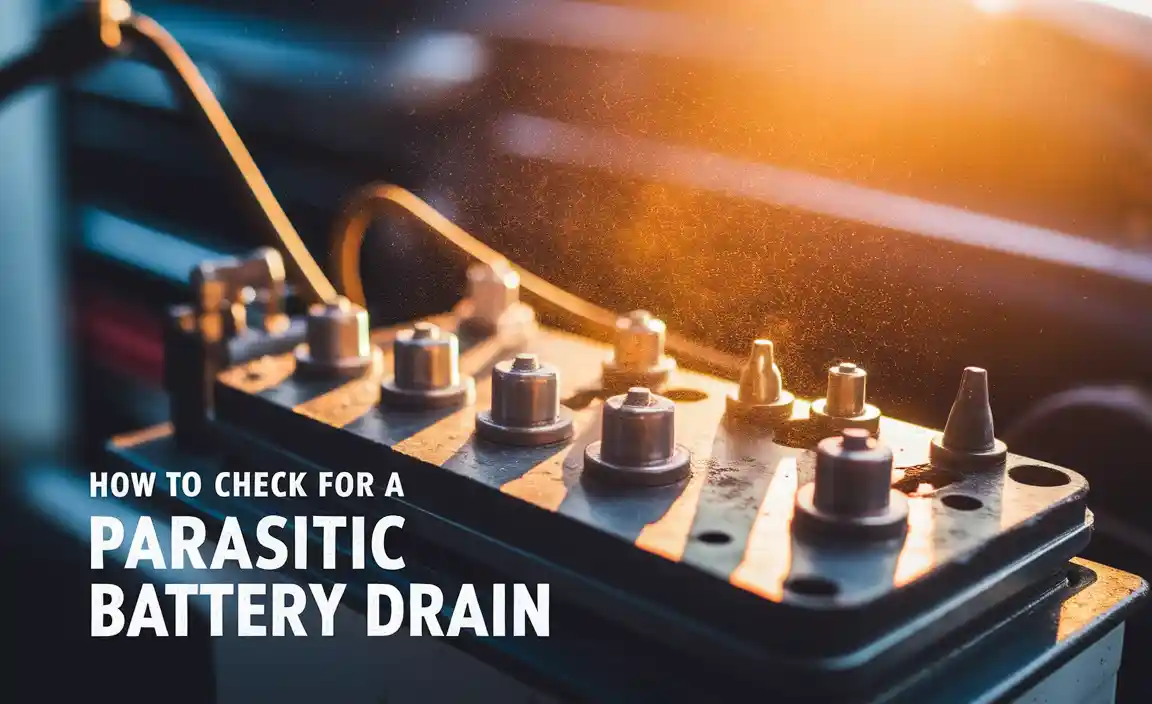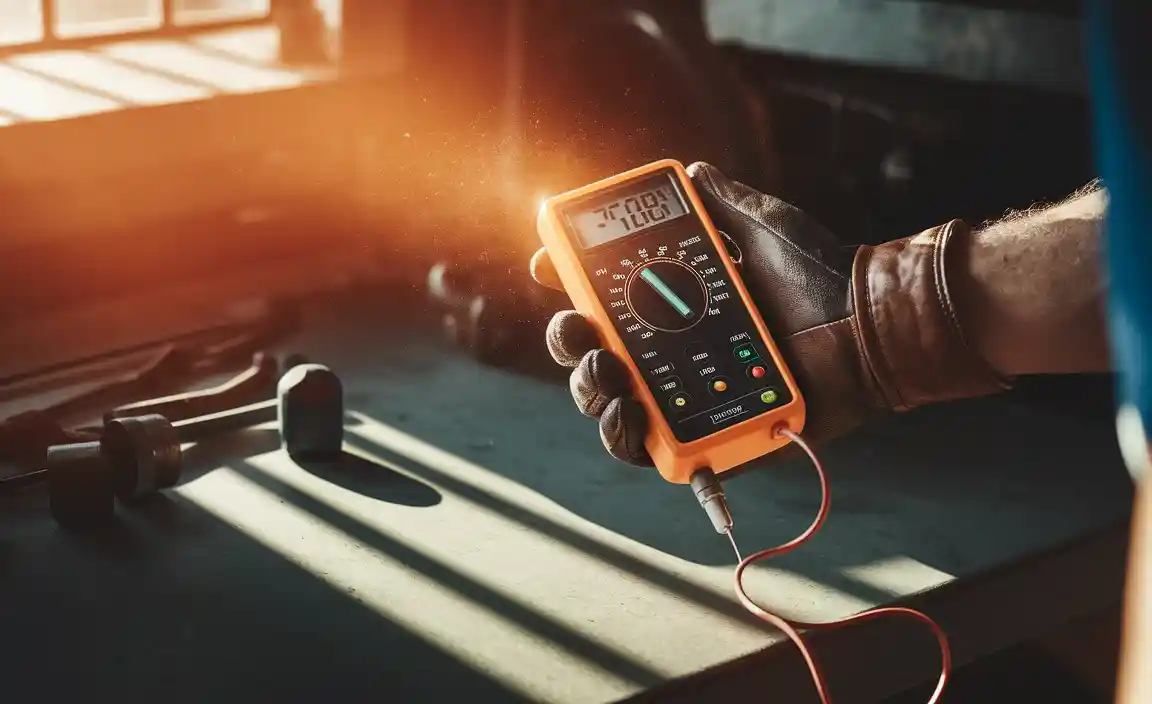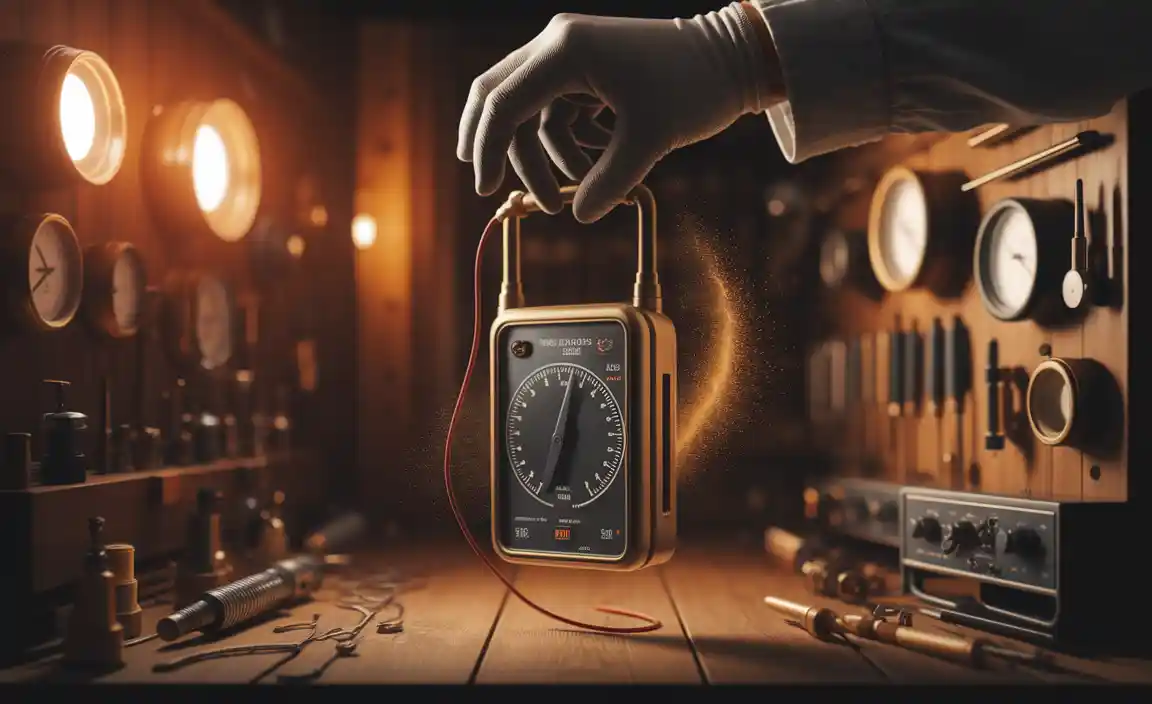Have you ever noticed your car struggling to start? Or how about that moment when your phone battery drains too fast? These issues can point to a sneaky problem called parasitic battery drain. Many people wonder how to check for a parasitic battery drain. It’s an annoying issue that can leave you stranded. But don’t worry; you can learn to find the culprit!

You might think that finding a parasitic battery drain requires expert knowledge. However, that’s not the case. With a little guidance, you can become your own detective! Imagine being able to solve the mystery behind your battery woes.
In this article, we’ll explore simple ways to check for a parasitic battery drain. You’ll discover easy steps and helpful tips to help you conquer this problem once and for all.
How To Check For A Parasitic Battery Drain Effectively
Is your car battery dying too soon? A parasitic battery drain might be the culprit. To check for this issue, start by turning off all electronics in your vehicle. Then, use a multimeter to measure the current between the battery and the disconnected negative cable. A reading over 50 milliamps signals a problem. Next, identify the drain source by removing fuses one at a time. This simple method can save you time and money on unnecessary battery replacements.
Understanding Parasitic Battery Drain
Definition of parasitic battery drain. Common causes and symptoms of battery drain.
Parasitic battery drain happens when your car battery loses power even when the engine is off. Think of it as your battery’s sneaky way of losing energy. Common causes include lights left on, faulty wiring, or a malfunctioning device. Symptoms are often a dead battery or slow engine cranking. Just imagine trying to start your car, and it goes, “Nope!” like a grumpy cat!
| Common Causes | Symptoms |
|---|---|
| Lights left on | Battery won’t start |
| Faulty wiring | Slow engine crank |
| Malfunctioning devices | Electrical systems acting weird |
Tools Required for Testing
Essential tools for checking battery drain. Safety precautions to take while performing tests.
To check for battery drain, you need a few important tools. These tools will help you find out what’s happening with your battery. Some essential tools are:
- Multimeter – This measures electrical current.
- Digital clamp meter – It can test without disconnecting wires.
- Wire strippers – Useful for preparing wires to connect.
Always remember safety. Here are a few tips:
- Wear safety goggles to protect your eyes.
- Work in a well-lit area.
- Disconnect the battery before starting any tests.
How can I find a parasitic battery drain?
Check if you have unusual battery drops after resting. Using tools like a multimeter can help identify any unwanted current draw.
Step-by-Step Guide to Check for Battery Drain
Initial battery health check. Disconnecting and reconnecting the battery.
First, you need to check your battery’s health. Look for any signs of age or damage. A weak battery can often play tricks on you! Next, safely disconnect the battery. This is like a nap for your car’s power. Wait a few minutes, then reconnect it. This simple step can reset any annoying issues. Don’t worry; your car won’t forget you!
| Initial Battery Check | Steps for Disconnection |
|---|---|
| Look for swelling or leaks. | Turn off the engine. |
| Use a multimeter for testing voltage. | Disconnect negative first, then positive. |
| Check expiry date if visible. | Reconnect positive first, then negative. |
Now you’re ready to hunt down that sneaky parasitic drain!

Using a Multimeter to Measure Drain
How to set up a multimeter for testing. Interpreting multimeter readings for battery drain.
Measuring battery drain with a multimeter is easy! First, set up your multimeter by turning it on and selecting the current setting. Make sure it’s in the correct range, like 10A or 20A, depending on your battery. Next, connect the multimeter in series with the battery’s negative terminal.
Interpreting your readings is simple too. If you see a small number, that means low drain. A high number means something is using a lot of battery. Keep an eye on how much power is disappearing!
What is a parasitic battery drain?
A parasitic battery drain happens when devices in your car use power even when the engine is off. This can lead to a dead battery. Common culprits include lights or faulty electronics.
Identifying Problematic Components
Common electrical components that may cause drain. How to isolate circuits to find the source.
Some car parts can drain your battery. Common culprits include lights, radios, and alarms. If these stay on, they can cause problems. To find the source, test each circuit. Turn off everything and check which circuit causes the drain. Use a multimeter to measure battery use.
- Check interior lights.
- Inspect the radio system.
- Examine alarm systems.

What should I look for in my car?
Look for lights that may stay on and faulty electronic devices. Regular checks will help spot problems early.
Troubleshooting Tips
Quick fixes for common parasitic drain issues. When to seek professional help for deeper issues.
Battery drama? Don’t fret! Start by checking your lights and electronics. Lights left on? That can cause a battery tantrum. Next, pull almost every fuse one by one to spot the troublemaker. Don’t be shy; a little detective work goes a long way! If the problem persists, it’s time to call in the pros. They have tools that can find *that* sneaky energy thief. Your battery deserves a happy, stress-free life!
| Common Issues | Quick Fix |
|---|---|
| Lights Left On | Check and turn them off. |
| Faulty Accessories | Disconnect them one by one. |
| Old Battery | Replace if necessary. |
Preventive Measures to Avoid Parasitic Drain
Regular maintenance tips for vehicle batteries. Best practices for electrical system management.
Keeping your car battery healthy is like giving it a daily hug. Regular check-ups are key! Check your battery terminals to ensure they are clean and tight. Dust and grime can cause trouble. It’s also smart to park in cool places, as heat can drain your battery faster than a kid running for ice cream! A quick battery test twice a year can spot issues before they explode like a sad piñata. Here are some quick tips:
| Tip | Description |
|---|---|
| Clean Connections | Keep battery terminals free of corrosion. |
| Avoid Leaving Lights On | Switch off lights and accessories when not in use. |
| Regular Tests | Test battery health every six months. |
Following these tips can help drastically reduce the risk of parasitic battery drain and keep your car running smoothly!

Conclusion
In conclusion, checking for a parasitic battery drain involves a few simple steps. Start by using a multimeter to measure current flow. Disconnect the negative battery cable to isolate your electrical system. Look for devices that may still be drawing power. If you’re unsure, ask a friend for help or read more online. Stay curious and tackle battery issues confidently!
FAQs
What Are The Common Symptoms Of A Parasitic Battery Drain In A Vehicle?
Common symptoms of a parasitic battery drain in a vehicle include the car not starting or cranking slowly. You might also notice that the lights stay on when you turn off the car. The radio or other electronics could keep running, even when you’re not using them. If the battery dies quickly or often, that’s another sign.
How Can I Use A Multimeter To Measure Parasitic Battery Drain Accurately?
To measure parasitic battery drain with a multimeter, first, turn off your car and remove the negative battery cable. Next, set the multimeter to the “amps” setting. Then, connect one end of the multimeter to the battery cable and the other end to the battery terminal. This shows how much power drains when the car is off. If the number is high, you may have a problem!
What Are Some Potential Causes Of Parasitic Battery Drain In Modern Cars?
Parasitic battery drain happens when your car uses power when it’s off. This can be due to things like a stuck light, a bad radio, or faulty alarms. Sometimes, extra gadgets or devices you added can also take power. Even computers in the car can stay on too long and use battery juice. It’s like having a toy that won’t turn off!
How Long Should I Wait Before Concluding That There Is A Parasitic Drain After Disconnecting The Battery?
You should wait about 30 minutes after you disconnect the battery. This gives the car time to settle. If the battery still drains quickly after reconnecting, that might mean there’s a problem. You may need to check the fuses or get help from an adult.
What Steps Can I Take To Identify And Isolate The Circuit Responsible For The Parasitic Battery Drain?
First, you should make sure your car is off and all doors are closed. Next, use a multimeter to measure the battery’s current. Then, remove one fuse at a time while checking the reading. When the reading drops, you’ve found the circuit causing the drain. Finally, look for problems in the wires or devices connected to that fuse.
Resource:
-
Understanding how a multimeter works: https://www.fluke.com/en-us/learn/blog/digital-multimeters/what-is-a-multimeter
-
Basic car electrical system overview: https://www.familyhandyman.com/project/how-a-car-electrical-system-works/
-
Common signs of car battery failure: https://www.aaa.com/autorepair/articles/how-to-tell-if-your-car-battery-is-dying
-
Tips for extending your car battery life: https://www.cars.com/articles/how-to-make-your-car-battery-last-longer-1420680688614/






